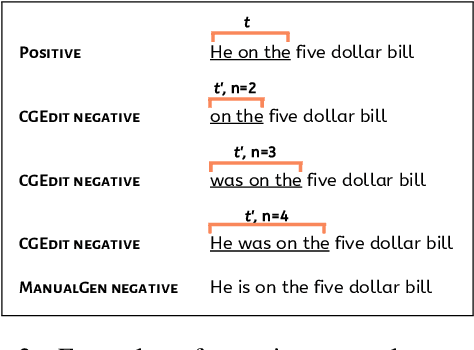Corpus-Guided Contrast Sets for Morphosyntactic Feature Detection in Low-Resource English Varieties
Paper and Code
Sep 15, 2022



The study of language variation examines how language varies between and within different groups of speakers, shedding light on how we use language to construct identities and how social contexts affect language use. A common method is to identify instances of a certain linguistic feature - say, the zero copula construction - in a corpus, and analyze the feature's distribution across speakers, topics, and other variables, to either gain a qualitative understanding of the feature's function or systematically measure variation. In this paper, we explore the challenging task of automatic morphosyntactic feature detection in low-resource English varieties. We present a human-in-the-loop approach to generate and filter effective contrast sets via corpus-guided edits. We show that our approach improves feature detection for both Indian English and African American English, demonstrate how it can assist linguistic research, and release our fine-tuned models for use by other researchers.
 Add to Chrome
Add to Chrome Add to Firefox
Add to Firefox Add to Edge
Add to Edge